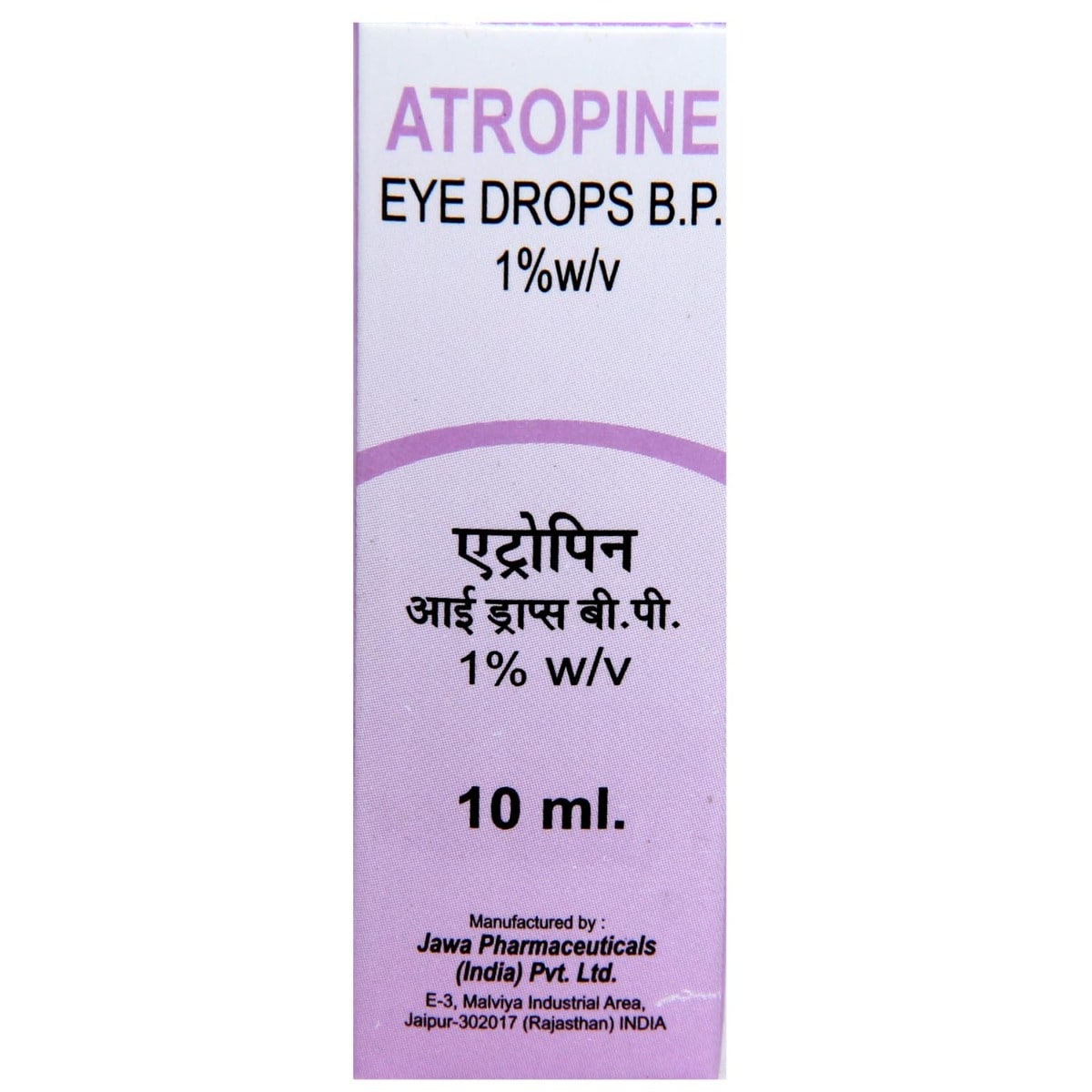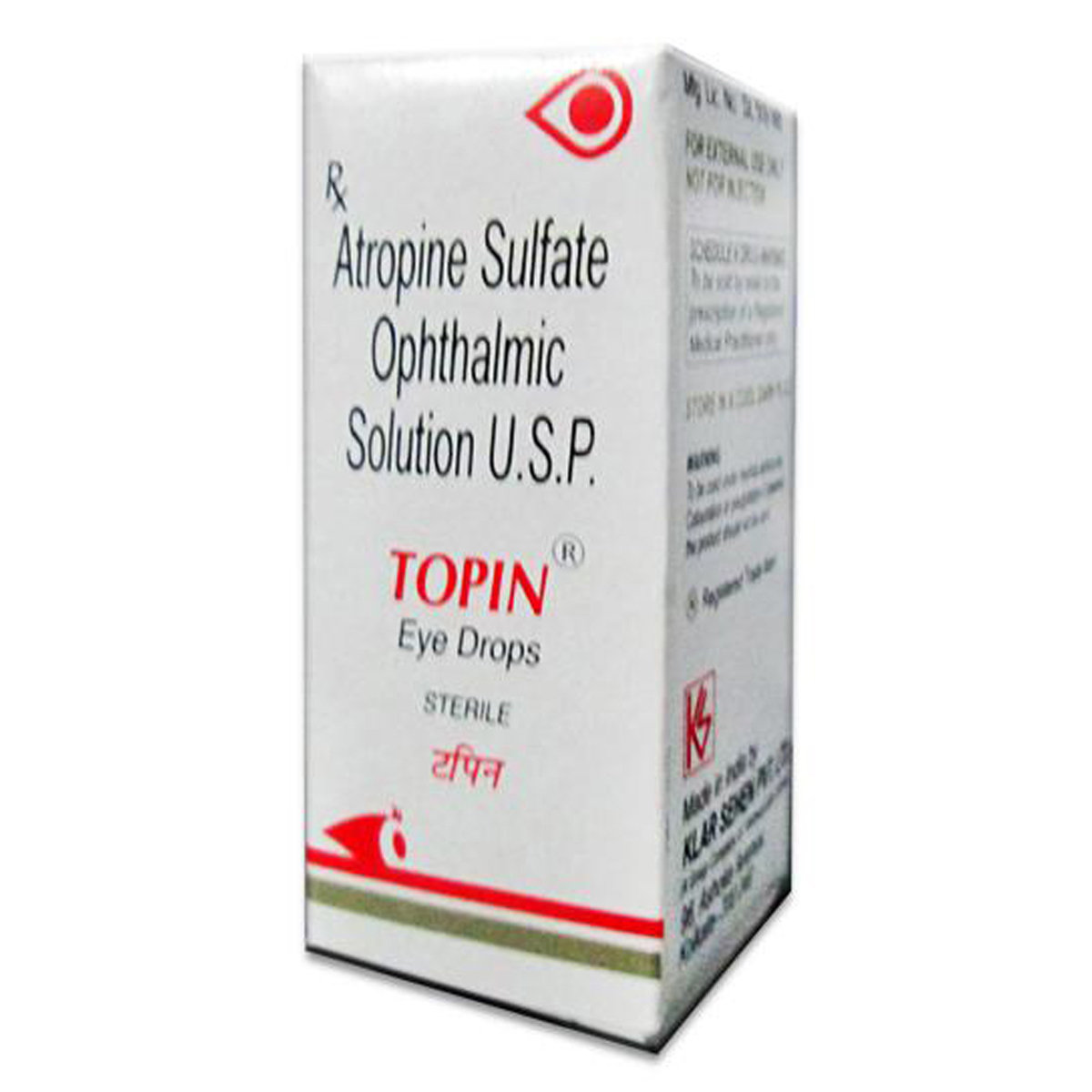Atrosun Eye Drops 3 ml

MRP ₹20
(Inclusive of all Taxes)
₹3.0 Cashback (15%)
know your delivery time
Provide Delivery Location
Composition :
Manufacturer/Marketer :
Consume Type :
Expires on or after :
Return Policy :
Selected Pack Size:3 ml
3 ml ₹18
(₹6.0 per ml)
In Stock
5 ml ₹20
(₹4.0 per ml)
Out of stock

Secure Payment

Trusted by 8 Crore Indians

Genuine Products
Therapeutic Class
Country of origin
Manufacturer/Marketer address
Author Details
We provide you with authentic, trustworthy and relevant information
Disclaimer
Alcohol
Safe if prescribed
It is not known if alcohol interacts with Atrosun Eye Drops 3 ml. Please consult your doctor if you have any concerns.
Pregnancy
Consult your doctor
Please consult your doctor if you have any concerns regarding this; your doctor will prescribe only if the benefits outweigh the risks.
Breast Feeding
Consult your doctor
Consult your doctor before using Atrosun Eye Drops 3 ml if you are breastfeeding. Your doctor will decide if Atrosun Eye Drops 3 ml can be used by breastfeeding mothers or not.
Driving
Safe if prescribed
Atrosun Eye Drops 3 ml might cause blurred vision. So, avoid driving or operating machinery until your vision is clear.
Liver
Consult your doctor
Please consult your doctor if you have any concerns regarding the usage of Atrosun Eye Drops 3 ml in patients with liver impairment.
Kidney
Consult your doctor
Please consult your doctor if you have any concerns regarding the usage of Atrosun Eye Drops 3 ml in patients with kidney impairment.
Children
Safe if prescribed
Atrosun Eye Drops 3 ml should be used in children only if prescribed by the doctor.
Product Substitutes
About Atrosun Eye Drops 3 ml
Atrosun Eye Drops 3 ml belongs to a group of medicines called mydriatics and cycloplegics used to treat uveitis or iritis (inflammation in the eye) and myopia (near-sightedness). It is also indicated for cycloplegia (paralysis of the ciliary eye muscle), mydriasis (dilation of the pupil), and the penalisation of the healthy eye in the treatment of amblyopia (decreased eyesight due to abnormal vision development). Besides this, Atrosun Eye Drops 3 ml is also used before certain eye examinations to widen the pupil and to diagnose eye problems such as blurred vision in children below 6 years and in children with convergent strabismus (cross-eyes or squint).
Atrosun Eye Drops 3 ml contains ‘atropine’, which relaxes the muscles in the eye, thereby making the pupil of the eye appear larger. This makes it easier for an eye examination. Atrosun Eye Drops 3 ml reduces pain and allows the inflamed part of the eye to rest and recover by relaxing the eye muscles.
You are advised to use Atrosun Eye Drops 3 ml for as long as your doctor has prescribed it for you, depending on your medical condition. In some cases, you may experience certain common side effects such as dry mouth, palpitations, nausea, constipation, and vomiting. Most of these side effects do not require medical attention and will resolve gradually over time. However, you are advised to talk to your doctor if you experience these side effects persistently.
Consult a doctor before using Atrosun Eye Drops 3 ml if you are pregnant or breastfeeding. Atrosun Eye Drops 3 ml might cause blurred vision; so, avoid driving or operating machinery until your vision is clear. Avoid touching the tip of the dropper as it may contaminate the contents. Always wash your hands after use. Keep your doctor informed about your health condition and the medicines you are taking to prevent any side effects/interactions.
Uses of Atrosun Eye Drops 3 ml
Medicinal Benefits Mweb
Key Benefits
Atrosun Eye Drops 3 ml belongs to a group of medicines called mydriatics and cycloplegics used to treat uveitis or iritis (inflammation in the eye) and myopia (near-sightedness). Besides this, Atrosun Eye Drops 3 ml is also used before certain eye examinations to widen the pupil, to diagnose eye problems such as blurred vision in children below 6years and in children with convergent strabismus (cross-eyes or squint). Atrosun Eye Drops 3 ml relaxes the muscles in the eye, thereby makes the pupil of the eye appear larger. This makes it easier for an eye examination. Atrosun Eye Drops 3 ml reduces pain and allows the inflamed part of the eye to rest and recover by relaxing the eye muscles. It is also indicated for cycloplegia (paralysis of the ciliary eye muscle), mydriasis (dilation of the pupil), and for the penalisation of the healthy eye in the treatment of amblyopia (decreased eyesight due to abnormal vision development).
Directions for Use
Side Effects of Atrosun Eye Drops 3 ml
- Dry mouth
- Palpitations
- Nausea
- Constipation
- Vomiting
- Mild stinging sensation in the eye
Drug Warnings
Do not use Atrosun Eye Drops 3 ml if you are allergic to any of its components, if you have closed-angle or narrow-angle glaucoma. Inform your doctor if you have a fever, heart problems, glaucoma, ocular hypertension, kidney or liver problems. Consult a doctor before using Atrosun Eye Drops 3 ml if you are pregnant or breastfeeding. Atrosun Eye Drops 3 ml might cause blurred vision; so, avoid driving or operating machinery until your vision is clear. Inform your doctor if you haven’t had your eyes checked recently.
Drug-Drug Interactions Checker List
- HYOSCYAMINE
Habit Forming
Special Advise
- Regular eye check-up is advised before and during the treatment if you have had any eye problems.
- Protect your eyes from bright light, especially when pupils are dilated.
Diet & Lifestyle Advise
- Eat a balanced diet.
- Avoid smoking.
- Include fish, nuts, legumes, citrus fruits, green leafy vegetables, carrots, sweet potatoes, and eggs, as they help improve eyesight.
- Get regular eye examinations done.
- Always wash your hands before applying contact lens.
- To prevent digital strain, look away every 20 minutes for 20 seconds at something 20 feet away.
- Reduce screen time. Avoid staring at digital screens for a long time.
- Avoid touching eyes with dirty hands as it might cause infection.
All Substitutes & Brand Comparisons
RX
Out of StockBell Pino Atrin Eye Drop
Bell Pharma Pvt Ltd
₹15.45
(₹2.78/ 1ml)
53% CHEAPERRX
Out of StockAtrop Eye Drop
Aurolab
₹15.5
(₹2.79/ 1ml)
53% CHEAPERRX
Out of StockTopin 1% Eye Drops 5 ml
Klar Sehen Pvt Ltd
₹15.6
(₹2.81/ 1ml)
53% CHEAPER

Have a query?
Buy best Ocular products by
Entod Pharmaceuticals Ltd
Ajanta Pharma Ltd
Sunways (India) Pvt Ltd
Sun Pharmaceutical Industries Ltd
Cipla Ltd
Micro Labs Ltd
Allergan Healthcare India Pvt Ltd
Intas Pharmaceuticals Ltd
Raymed Pharmaceuticals Ltd
Nri Vision Care India Ltd
FDC Ltd
Jawa Pharmaceuticals India Pvt Ltd
Indoco Remedies Ltd
Sapient Laboratories Pvt Ltd
Senses Pharmaceuticals Pvt Ltd
Centaur Pharmaceuticals Pvt Ltd
Neomedix Healthcare India Pvt Ltd
Aromed Pharmaceuticals
Optho Remedies Pvt Ltd
Aurolab
Austrak Pvt Ltd
Lupin Ltd
Mankind Pharma Pvt Ltd
Zivira Labs Pvt Ltd
Optho Pharma Pvt Ltd
Synovia Life Sciences Pvt Ltd
Akumentis Healthcare Ltd
Eyekare
His Eyeness Ophthalmics Pvt Ltd
Protech Remedies Pvt Ltd
Runyon Pharmaceutical Pvt Ltd
Alcon Laboratories Inc
Syntho Pharmaceuticals Pvt Ltd
Alembic Pharmaceuticals Ltd
Bell Pharma Pvt Ltd
Klar Sehen Pvt Ltd
Sentiss Pharma Pvt Ltd
Irx Pharmaceuticals Pvt Ltd
Optho Life Sciences Pvt Ltd
Phoenix Remedies Pvt Ltd
Alkem Laboratories Ltd
Doctor Wonder Pvt Ltd
Hicare Pharma
Ipca Laboratories Ltd
Neon Laboratories Ltd
Okulus Drugs India
Pharmtak Ophthalmics (I) Pvt Ltd
Berry & Herbs Pharma Pvt Ltd
Glow Vision Pharmaceuticals
Kaizen Drugs Pvt Ltd
Choroid Laboratories Pvt Ltd
Indiana Opthalamics Pvt Ltd
Optica Pharmaceutical Pvt Ltd
Pharmatak Opthalmics India Pvt Ltd
Samarth Life Sciences Pvt Ltd
Vibgyor Vision Care
Mofon Drugs
Novartis India Ltd
Pharmia Biogenesis Pvt Ltd
Zydus Cadila
Appasamy Ocular Devices Pvt Ltd
Leeford Healthcare Ltd
Medivision Pharma Pvt Ltd
Orbit Life Science Pvt Ltd
X-Med Royal Pharma Pvt Ltd
Zee Laboratories Ltd
Aarma Laboratories
Guerison MS Inc
Laborate Pharmaceuticals India Ltd
Xtas Pharmaceuticals
Accurex Biomedical Pvt Ltd
Blucrab Pharma Pvt Ltd
Does Health Systems Pvt Ltd
Flagship Biotech International Pvt Ltd
Lavue Pharmaceuticals Pvt Ltd
Nutrilis Healthcare Pvt Ltd
Ursa Pharm India Pvt Ltd
Vee Remedies
Vyonics Health Care India Pvt Ltd
Warren Pharmaceuticals Pvt Ltd
Abbott India Ltd
Accvus Pharmaceuticals
Akums Drugs & Pharmaceuticals Ltd
Cadila Healthcare Ltd
Carevision Pharmaceuticals Pvt Ltd
Dey's Medical Stores (Mfg) Ltd
East West Pharma India Pvt Ltd
Eyedea Pharmaceuticals Pvt Ltd
Nimbus Healthcare Pvt Ltd
Ocuris Pharmaceuticals Pvt Ltd
Sherings Pharmaceuticals
Tarks Pharmaceuticals Pvt Ltd
Vcan Biotech
Vision Medilink
Aice Health Care Pvt Ltd
Appasamy Pharmaceuticals Pvt Ltd
Asperia Lifescience Pvt Ltd
Beatum Healthcare Pvt Ltd
East India Pharmaceutical Works Ltd
Grevis Pharmaceutical Pvt Ltd

_0.jpg?tr=q-85)




